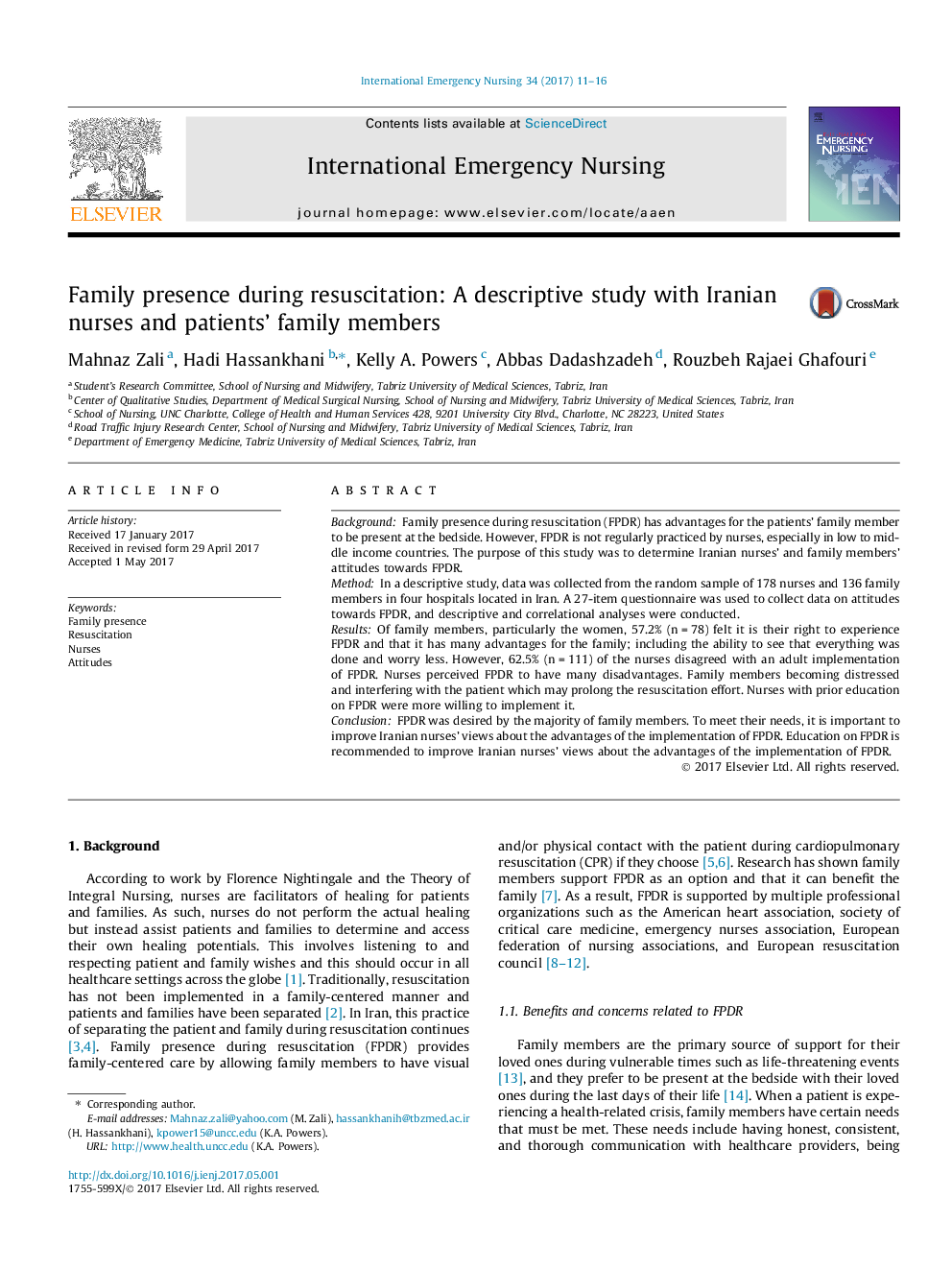| Article ID | Journal | Published Year | Pages | File Type |
|---|---|---|---|---|
| 5563022 | International Emergency Nursing | 2017 | 6 Pages |
â¢Female family members declared significantly stronger attitude of FPDR.â¢Family members who expected CPR of patients with chronic diseases were more likely to request FPDR.â¢Despite family members' desire of FPDR, nurses had negative attitude towards it.â¢Nurses felt FPDR would prolong resuscitation and render it difficult to stop resuscitative care.â¢FPDR was allowed more frequently by the nurses who had received prior education and training on FPDR.
BackgroundFamily presence during resuscitation (FPDR) has advantages for the patients' family member to be present at the bedside. However, FPDR is not regularly practiced by nurses, especially in low to middle income countries. The purpose of this study was to determine Iranian nurses' and family members' attitudes towards FPDR.MethodIn a descriptive study, data was collected from the random sample of 178 nurses and 136 family members in four hospitals located in Iran. A 27-item questionnaire was used to collect data on attitudes towards FPDR, and descriptive and correlational analyses were conducted.ResultsOf family members, particularly the women, 57.2% (n = 78) felt it is their right to experience FPDR and that it has many advantages for the family; including the ability to see that everything was done and worry less. However, 62.5% (n = 111) of the nurses disagreed with an adult implementation of FPDR. Nurses perceived FPDR to have many disadvantages. Family members becoming distressed and interfering with the patient which may prolong the resuscitation effort. Nurses with prior education on FPDR were more willing to implement it.ConclusionFPDR was desired by the majority of family members. To meet their needs, it is important to improve Iranian nurses' views about the advantages of the implementation of FPDR. Education on FPDR is recommended to improve Iranian nurses' views about the advantages of the implementation of FPDR.
